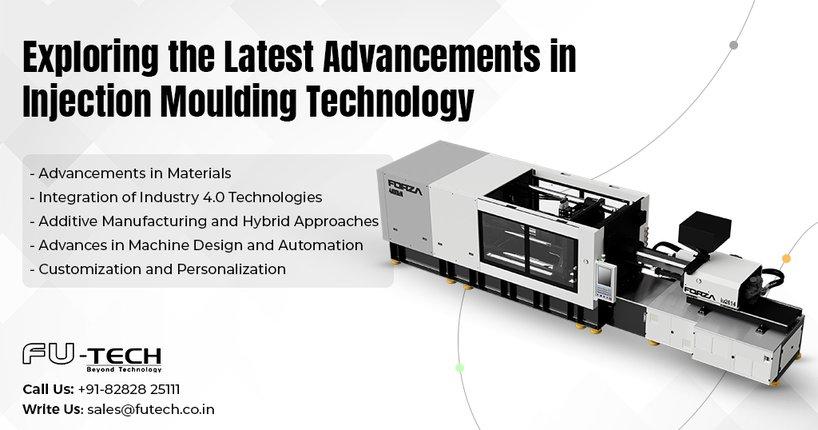Exploring the Latest Advancements in Injection Moulding Technology
In the realm of manufacturing, injection moulding stands as a cornerstone process for producing intricate plastic components efficiently and at scale.
In the realm of manufacturing, injection moulding stands as a cornerstone process for producing intricate plastic components efficiently and at scale. Over the years, this technology has witnessed remarkable advancements, driving innovation across industries and revolutionizing the way products are designed and manufactured. In this blog, we'll delve into some of the latest advancements in injection moulding technology and their implications for the manufacturing landscape.

Introduction to Injection Moulding Technology
Injection moulding involves injecting molten material, typically plastic, into a mould cavity where it solidifies to form the desired shape. It offers numerous advantages such as high production rates, design flexibility, and the ability to produce complex geometries with tight tolerances. As technology evolves, injection moulding continues to push the boundaries of what's possible in manufacturing.
Advancements in Materials
One of the most significant areas of advancement in injection moulding technology lies in materials science. Manufacturers now have access to a diverse range of advanced polymers and composite materials with enhanced properties such as strength, durability, and heat resistance. These materials enable the production of components that were previously impractical or impossible to manufacture using traditional methods.
Integration of Industry 4.0 Technologies
The advent of Industry 4.0 has brought about a paradigm shift in manufacturing, and injection moulding is no exception. Today, smart injection moulding machines are equipped with sensors, actuators, and connectivity features that enable real-time monitoring and control of the manufacturing process. This integration of IoT (Internet of Things) technology allows for predictive maintenance, optimization of production parameters, and improved quality control.
Additive Manufacturing and Hybrid Approaches
Additive manufacturing, commonly known as 3D printing, has emerged as a complementary technology to injection moulding. By leveraging additive manufacturing for rapid prototyping and tooling production, manufacturers can accelerate the product development cycle and reduce time-to-market. Moreover, hybrid approaches that combine traditional injection moulding with 3D printing techniques offer unprecedented design freedom and cost-efficiency.
Advances in Machine Design and Automation
Modern injection moulding machines feature sophisticated design elements and automation capabilities aimed at maximizing productivity and efficiency. From high-speed, precision-machined components to advanced robotic systems for part handling and assembly, these machines offer unparalleled performance and reliability. Additionally, advancements in energy-saving technologies contribute to sustainability efforts while reducing operational costs.
Customization and Personalization
Consumer preferences are becoming increasingly diverse, driving the demand for customized and personalized products. Injection moulding technology has responded to this trend by enabling mass customization through techniques such as multi-shot moulding and in-mould decoration. These methods allow for the incorporation of unique designs, colors, and textures directly into the moulded parts, catering to individualized consumer needs.
Conclusion
The evolution of injection moulding technology continues to reshape the manufacturing landscape, empowering businesses to innovate and adapt to changing market dynamics. With advancements in materials, integration of Industry 4.0 technologies, and novel approaches to design and automation, injection moulding stands at the forefront of modern manufacturing. As we look to the future, the possibilities are limitless, heralding a new era of efficiency, sustainability, and customization in the world of plastic component production.
No comments yet. Login to start a new discussion Start a new discussion